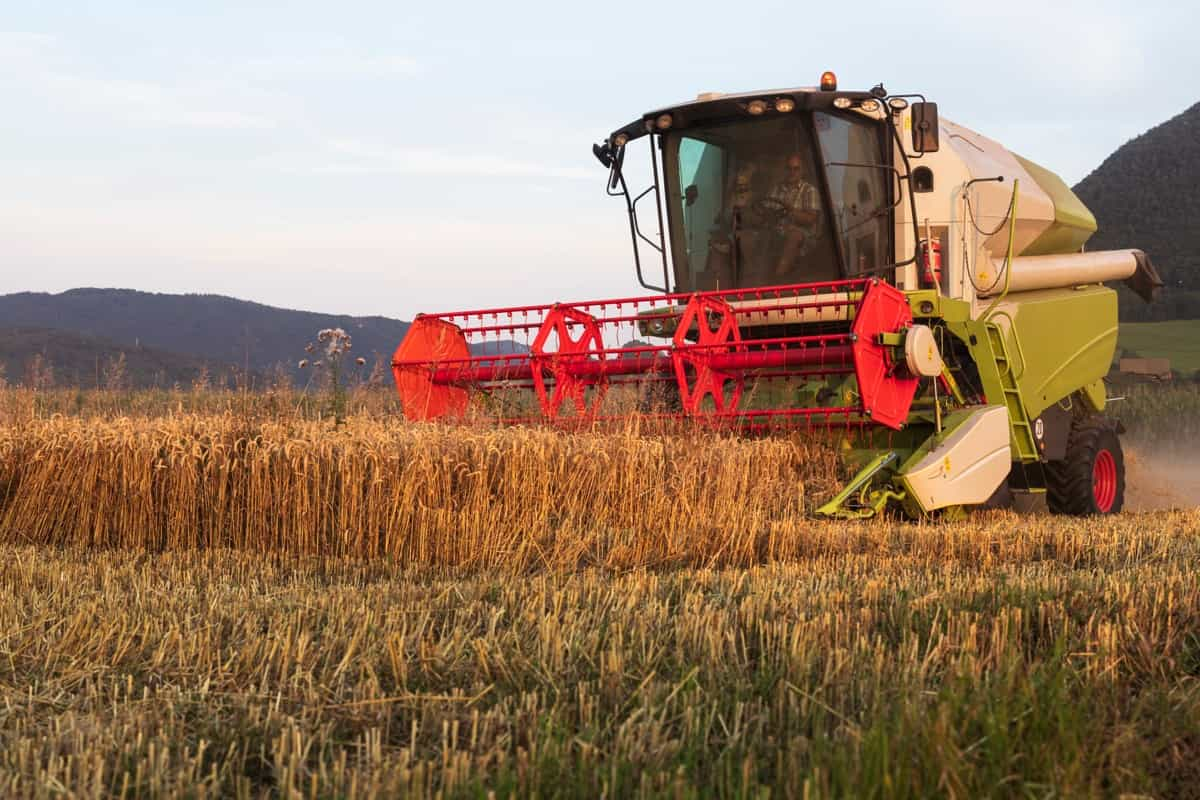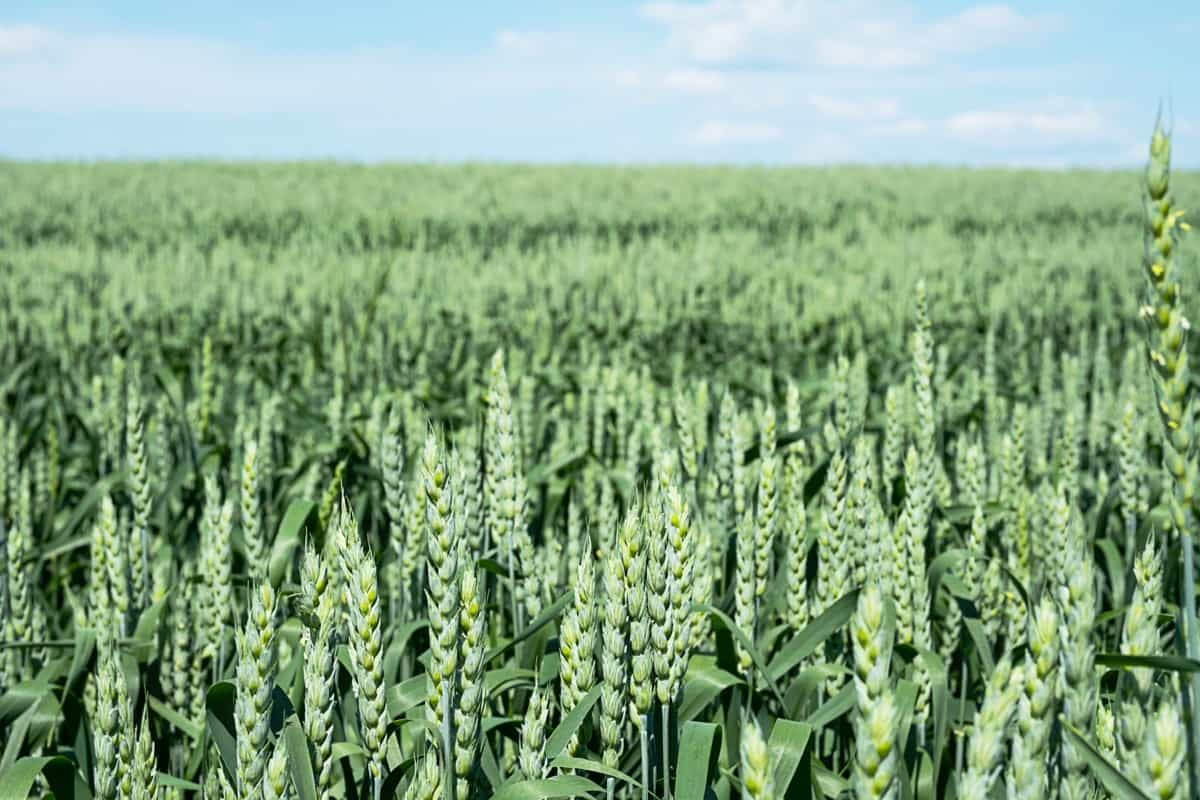Wheat is a cereal crop originating in Southwest Asia and was one of the earliest domesticated plants. It is a major food source for humans today and is cultivated in many regions of the globe. The global wheat production is 627 million tonnes, and 215 million hectares are used for wheat cultivation. China is the world’s greatest wheat producer, followed by India. India cultivates Wheat on the greatest land area but produces less Wheat than China.

Russia, the United States, Canada, Germany, Ukraine, Pakistan, Australia, and Argentina are major wheat producers. Wheat cultivation requires well-drained soil, sufficient moisture, and appropriate temperatures. Wheat is cultivated at various times of the year, depending on the climate and location. It is a valuable crop because it can be used to make bread, pasta, and other culinary products and feed animals.
Wheat Production Guide
Best Package and Practices of High Wheat Production
It is essential to use good agricultural practices such as selecting appropriate varieties, preparing the soil well, planting at the right time, managing pests and diseases, applying the appropriate amount of fertilizers, and managing water effectively to achieve high wheat production.
Maintaining quality and minimizing losses after harvest is also possible with careful post-harvest processing and storage. Using conservation tillage, crop rotation, and intercropping as part of an overall integrated agricultural management strategy is another way to boost output while reducing negative environmental effects.
Land/ Field Preparation and Soil Requirements for Wheat
The land should be plowed and leveled, weeds should be removed, and manure should be added. Ideal soil types include sandy loam or loam with a pH between 6 and 7.5 and a moderate water-containing capacity. Mixing Azatobacter, Phophetica culture, and Trichoderma powder with farm yard manure is recommended for soil treatment.
Wet and powdery soils should be avoided. Deep tillage with a moldboard or disc plow, harrowing with a disc or tines, and planking are all components of field preparation. During field preparation, fertilizers and Jeevamrut or Waste Decomposer can be applied to increase crop yield and soil fertility.
Temperature, Climatic, and Rainfall Requirements for Wheat
Wheat thrives in moderate, subtropical, and tropical climates. It thrives in snow and is cold-tolerant. Seeds grow best at 20–25 degrees Celsius but can germinate at 4–35 degrees Celsius. Wheat grows in 500-750 mm-rainfall regions. Tillering and grain filling require moisture. Wheat yields can suffer in extreme temps. Wheat cereals grow best in moist, cool weather with modest precipitation and humidity.
Propagation Method and Seed Quality for Wheat
Wheat propagates by seeds. Planting should be done with high-quality seedlings with high germination rates and disease-free. To keep diseases from spreading through the seeds, they should be certified, properly cleaned, and treated with fungicides.
Seed Treatment for Wheat
Wheat seed treatment prevents diseases and pests. Treat seed for loose smut, flag smut, root rot, foot rot, and termites with recommended fungicides and insecticides. Trichoderma viride seed treatment promotes systemic yellow rust protection. To manage ear cockle, float seed lots in 2% brine.
In case you missed it: A Step-By-Step Guide for Growing Wheatgrass Microgreens: DIY in Simple Way from Seeds in Containers

Seed Rate and Spacing for Wheat
The recommended wheat seeding rate is 120 to 150 kg/ha, with a row spacing of 22.5 to 25 cm and a plant spacing of 5 to 7.5 centimeters within the row. Varieties planted on time require 100-125 kg/ha, whereas varieties sown late require 125-150 kg/ha. Before sowing, seeds must be treated with Vitabax or Thiram at 3g/kg to prevent seed-borne diseases. Untreated seedlings are susceptible to these diseases, which may reduce crop yield.
Sowing Method for Wheat
The seeds can either be broadcasted or planted with a drill. Using a drill involves placing the seeds at a uniform depth in furrows. In contrast, broadcasting involves spreading the seeds equitably across the field. Sow the seeds in the soil at a depth of 6 centimeters.
Manure & Fertilizer Applications in Wheat
Farmers must apply organic and inorganic fertilizers to their wheat fields to ensure a high yield. During field preparation, it is essential to incorporate 5 to 10 tons of manure or compost per hectare. For irrigated timely sown Wheat, the recommended fertilizer dosages are 150 kg N, 60 kg P2O5, and 40 kg K2O per hectare.
In comparison, late sown Wheat requires 120 kg N, 40 kg P2O5, and 20 kg K2O per hectare. At sowing, farmers should position phosphatic and potassium fertilizers. Depending on the variety of soil, nitrogen should be applied in two or three equal portions. Soil analysis is essential for fertilizer application efficiency. Farmers who choose organic fertilizer can utilize waste decomposers weekly.
Weed Control and Herbicide Application in Wheat
Weeds can inhibit wheat growth and reduce crop yields, and they can be managed by cultural, mechanical, or chemical means. Crop rotation, intercropping, and cover crops are cultural methods, while hoeing and manual weeding are examples of mechanical methods. Herbicides like 2,4-D and Isopoturon can effectively control broad-leaved and mixed-population vegetation.
Around 30 to 40 days after sowing, early weed control is crucial for minimizing weed competition. Integrating various weed management techniques, such as land preparation, manual weeding, and herbicides can aid in controlling vegetation growth for optimal wheat production.
Water Management/ Irrigation in Wheat
Irrigation should favor soil moisture stress-sensitive CRI, boot, and milk stages. If water is not limited, six irrigations at CRI, tiller completion, late jointing, flowering, milk, and dough are suggested for maximum yield. For the best results, irrigate the wheat crop at specific days after sowing, including 20-25 DAS for the first irrigation at the crown root initiation stage, 40-45 DAS for the second irrigation at the tillering stage, 70-75 DAS for the third irrigation at the late jointing stage, 90-95 DAS for the fourth irrigation at the flowering stage, and 110-115 DAS for the fifth irrigation at the dough stage.
Disease Control in Wheat
Wheat’s major diseases are stem rust, leaf rust, stripe rust, loose smut, and Karnal bunt. These diseases can greatly lower crop yield and quality. Crop rotation, timely sowing, and disease-free seed control these disorders. Fungicides can chemically treat ailments. Triazoles and strobilurins fight rust, while carbendazim and tebuconazole kill loose smut and Karnal bunt. Plant breeding can create disease-resistant wheat types for long-term control.
Pest Control in Wheat
Aphids, stem borers, termites, armyworms, and Hessian flies attack wheat and are major pests. Wheat pest control includes resistant cultivars, cultural practices, biological control, and chemical pesticides. Pest-resistant Wheat can avoid infestation. Crop rotation and intercropping lessen pests. Parasitic wasps and ladybugs manage pests through biological control. Insecticides can control pests, but their use should be limited to protect the environment and human health.
Harvesting and Threshing of Wheat
Wheat is harvested when the leaves and stems are yellow, indicating maturity. Also, consider soil moisture. Wheat harvesting at ideal 25–30% moisture. Irrigated crops mature later than rainfed crops. There are numerous harvesting techniques. Wheat Crops are cut at the base with a sickle or scythe. A combine harvester can thresh and cut the produce at the same time. Threshing separates the Wheat from straw after harvest by hand or using a thresher. The harvesting and threshing of Wheat affect grain production and purity.
In case you missed it: Cassava Processing Plant Business Plan: A Profitable Venture for Cassava Farmers

Wheat Yield per Acre
An appropriate wheat yield per acre can be between 1500 and 2500 kg, or 1.5 and 2.5 tonnes. In 2021–22, 3200 kg/hectare of Wheat was produced per hectare.
Conclusion
Wheat cultivation requires careful planning and execution to produce the highest possible yield. Appropriate seed, soil, water, and nutrient management is critical from land preparation to harvesting. A successful wheat crop can be ensured by following suggested methods and adapting to local conditions.
- Feed Your Flock for Less: Top 10 Tips to Save on Chicken Feed
- Ultimate Guide to Ossabaw Island Hog: Breeding, Raising, Diet, and Care
- Hatching Answers: The Top 10 Reasons Your Chickens Aren’t Laying Eggs
- Eggs and Economics: Breaking Down the Cost of Raising Backyard Chickens
- Defend Your Greens: Proven Methods to Keep Iguanas Out of Your Garden
- Ultimate Guide to Cinnamon Queen Chicken: A Comprehensive Guide for Beginners
- Ultimate Guide to California Tan Chicken: Breeding, Raising, Diet, Egg-Production and Care
- Ultimate Guide to Marsh Daisy Chicken: Breeding, Raising, Diet, and Care
- 10 Types of Chicken Farming Businesses You Can Start for Profits